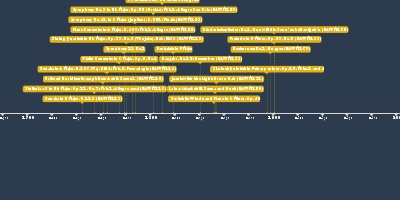1 gen 1745 anni - Sonata in D Major, K. 119 (NAWM 113)
Descrizione:
Composer: Domenico ScarlattiGenre: Keyboard Sonata
CAVEAT: Composed sometime during 1740s
Form:
Balanced binary - The piece has an equally footed A and B half, and both halves end with the same material, although in different keys. Thus, the return of the tonic does not see repetition of material from the beginning, but from the end of the first section.
Composition:
He presents many different ideas, and often employs a technique Scarlatti has dubbed "self-parroting", meaning he immediately repeats a short musical phrase. This technique was also used in comic operas to emphasize particularly witty lines. In this context, it could also simply be for pedagogical purposes.
Key mapping:
First section: D major, cadences on E major (the dominant of V), then (quite characteristic of Scarlatti) begins in a minor and then transitions to A major.
Second section: D minor, A minor, cadences on B major, then goes to e minor. Goes around the circle of fifths (E to A to D) until it returns home to the tonic (first d minor then D major)
Spanish undertones:
Castanet-like rhythms of some of the repeated figures, dense chords reflecting guitar technique (unchanging open strings and changing notes on other strings), and some chords have six notes (like the guitar).
Aggiunto al nastro di tempo:
Data:
1 gen 1745 anni
Adesso
~ 281 years ago
